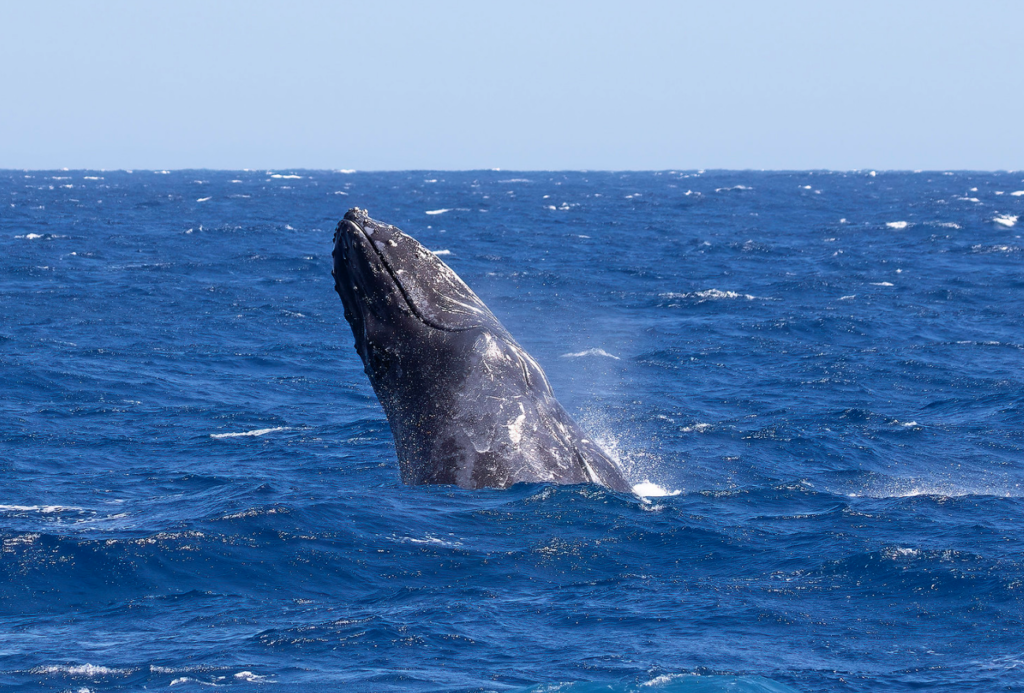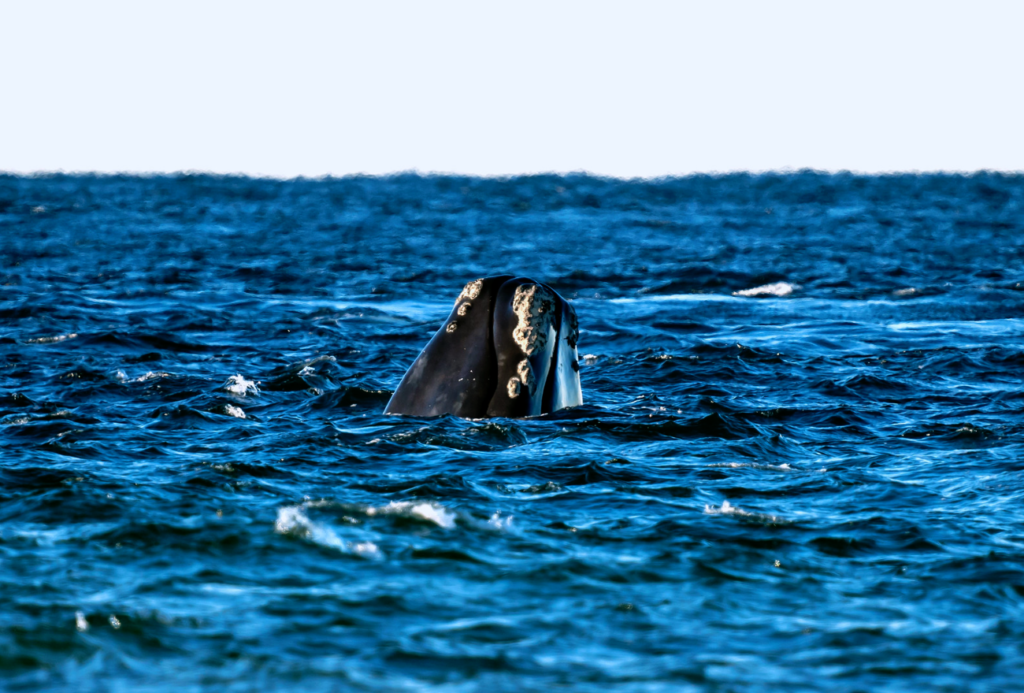A recent study by the School of the Environment at Queensland University in Australia found that humpback whales (Megaptera novaeangliae) off the country’s eastern coast experienced significantly lower stress levels and better overall health during the first year of the Covid-19 pandemic due to the reduction of human activity in the ocean during this period. Stress negatively impacts animals much like it does humans, suppressing growth, immune function and reproduction. This phenomenon affects a wide range of species, including marine iguanas and ring-tailed lemurs.

The research team, led by Dr. Jake Linsky, operated from the Moreton Bay Research Station. They ventured out in small boats to collect blubber and skin samples from whales off North Stradbroke Island, located 19 miles (30 km) from Brisbane. North Stradbroke Island is the world’s second-largest sand island, known locally as Straddy and traditionally called Minjerribah by the Aboriginal people.
The research was published on June 5th 2024 in the journal Marine Environmental Research. It parallels findings from a study conducted by scientists from Boston’s New England Aquarium shortly after the September 11th 2001 terrorist attacks. During that period, two research teams were at sea in the Bay of Fundy on Canada’s Atlantic coast.
Initially, the researchers aimed to develop pregnancy tests and other methods to study whale reproduction. However, following the attacks, the cessation of activity by commercial planes and ships resulted in reduced noise pollution. This led to lower levels of stress hormones found in the faeces of North Atlantic right whales (Eubalaena glacialis) over the following weeks. While blood samples could also indicate stress levels, they were much harder to collect and a couple of years later, the whales’ stress levels returned to normal.
Stress in whales can also increase due to other factors as seen during the Second World War. Although fewer whales were being harpooned, cortisol levels rose, likely due to increased human activity and the ensuing noise. Additionally, cortisol levels in whales increase with water temperature, making climate change a significant stressor. This even affects the largest animal on Earth, the blue whale (Balaenoptera musculus). Melting sea ice reduces the population of krill, the primary food source for blue whales, exacerbating their stress levels.

Whales around Australia are protected by the Whale Protection Act 1980 and subsequently by the Environment Protection and Biodiversity Conservation Act 1999. Dr. Linsky’s team examined humpback whales during their migration and breeding seasons in 2020 and 2021. They tracked various health indicators, including size and energy levels. The results showed a significant reduction in the stress hormone cortisol in 2021 compared to 2020.
Dr. Linsky suggested several factors that could explain why whales were healthier, including reduced intake of man-made pollutants, like polychlorinated biphenyls. However, he highlighted that human activities pose significant threats to whale populations. Collisions with ships remain a leading cause of whale mortality. Over the past century, human-caused noise in the ocean has increased dramatically, it is now considered an environmental pollutant under international legislation.
Underwater, sight is less critical than on land; at depths greater than 330 feet (100 meters), nearly all light is absorbed, prompting sea life to rely heavily on other senses, particularly sound. Whales, which communicate and navigate vast ocean expanses using vocalisations, are highly sensitive to noise disruptions. Human activities can disrupt their communication, forcing them to adapt by raising their vocal volume, staying closer together and simplifying their calls.
In natural conditions, whales can communicate over distances of up to 1.4 miles (2.3 km). However, human-generated noise reduces this range significantly, sometimes to just 650 feet (200 meters). For instance, navy sonar emits sounds louder than 200 decibels, causing serious health issues, such as embolisms (blocked blood vessels) in beaked whales when they rapidly ascend to escape the sound pulses, potentially resulting in death. Additionally, the constant low-frequency hum from container ships can drown out whale calls entirely, leading some whales to fall silent.

Auditory stress impacts a wide array of sea creatures beyond whales, including fish, seals, squid and even oysters. For instance, outboard motors can disrupt the behaviour of damselfish, making them less responsive to predator cues. Loud noises have been linked to deformities in scallops, reducing their chance of survival. Noise pollution also drives Arctic cod from their feeding grounds and scatters schools of tuna, and seismic airguns, used in ocean mapping and oil and gas exploration, pose a threat to tiny zooplankton, foundational to the ocean food chain, potentially killing them.
Michelle Fournet, an acoustic ecologist at Cornell University, emphasizes the critical role of sound for underwater life, stating, “Almost all life underwater relies on sound. … [A] lot of very vital functions are compromised when it gets too noisy.” Quieter environments enable richer communication and more effective information exchange among marine species.
Eastern Australian humpback whales were historically valued only for their oil and bones (baleen), with whale product exports forming Australia’s first primary industry. Today, these whales are cherished alive for their ecological and economic contributions. After nearing extinction in the 1960s, concerted conservation efforts have seen their population rebound from just over 100 individuals in 1963, when whaling ceased, to about 8,000 in 2006—an exemplary recovery from whaling.
Dr. Linsky underscores that the health of eastern Australian humpback whales serves as a barometer for the broader Antarctic marine ecosystem. He advocates for further research to assess whale health comprehensively, stressing that human activities plays a pivotal role. While noting the whales’ remarkable adaptability to environmental changes, he urges limiting adverse human impacts to ensure their continued thriving in today’s rapidly changing oceans.





















